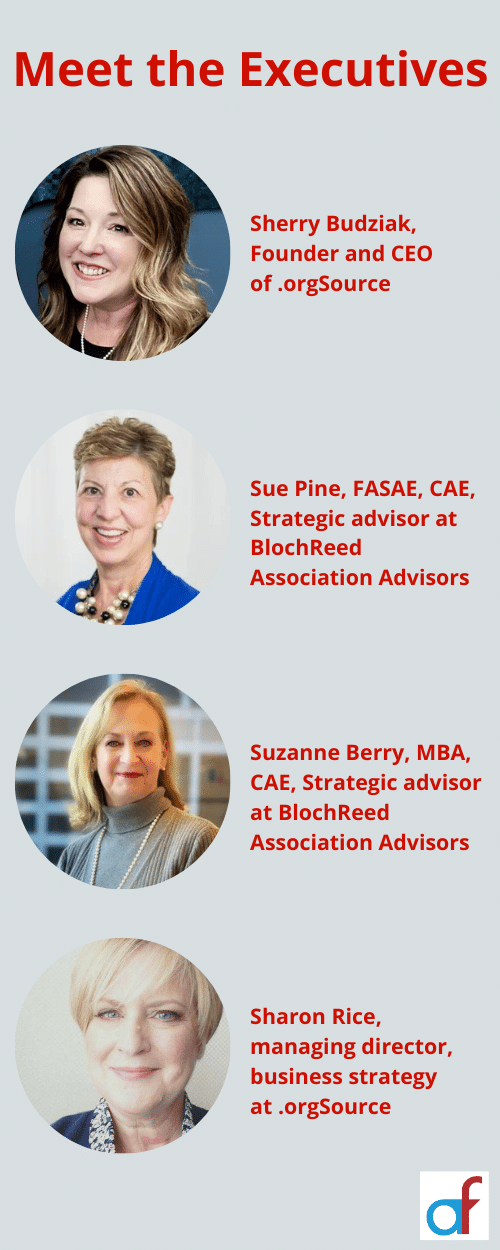Is an Organizational Assessment Right for Your Association?


Different types of assessments
While some of these terms may be used interchangeably, it is important to note the distinction between an organizational assessment and an operational review.
“The main difference between these processes is whether we’re looking at governance or not,” explains Sherry Budziak, founder and CEO of .orgSource. “So, if we’re talking about an organizational assessment, we might also be including the governance structure and how governance is performing. When we conduct an operational review, we’re focusing on processes, workflows, resource utilization, and efficiency in meeting operational goals of the CEO.”
“It is also important not to confuse these processes with a CEO assessment,” says Sue Pine, FASAE, CAE, strategic advisor at BlochReed Association Advisors. “An organizational assessment or operational review focus on the organization, while the CEO assessment will gauge the CEO’s effectiveness in leading the association, aligning with the board’s expectations, and achieving strategic goals. An organizational assessment should not be used as a means if a leadership change is intended,”
Each association should determine its own purpose and scope of any “organizational assessment” assessment conducted.
How often should an organizational assessment be done?
Organizational assessments should be proactively conducted to ensure alignment with organizational strategy and goals, the infrastructure and personnel to accomplish goals, and as part of continuous improvement. “It’s important for an association to take a pause and discuss whether what was set up years ago still makes sense,” Pine says. “Often, market needs and technology have changed. While you don’t want to shake up the organization too frequently, it’s important to assess on a regular cycle fitting in with strategic planning.”
Who typically prompts an organizational assessment?
Typically, either the CEO or the Board of Directors requests an external consultant to undertake the organizational review. “It’s important to know who the champion behind the initiative is,” says Suzanne Berry, MBA, CAE, strategic advisor at BlochReed Association Advisors. “It’s best when both parties are supportive and working together. If there is not mutual support for the project, careful navigation and sensitivity are required to avoid potential ‘landmines’.”
Budziak agrees that “while either the Board or CEO can prompt a review, it’s not the best case scenario when initiated by the Board.”
When a CEO proactively determines an organizational review is needed, it may be to determine whether the organization is in a good position to implement their strategic plan and establish a plan with goals, objectives, and metrics that align with their strategy.
“A more likely scenario is that organizations contact us when there’s a problem, whether it’s technology, staffing, operational inefficiencies, or strategic misalignment,” says Sharon Rice, managing director, business strategy at .orgSource.
What role does a consultant play?
External consultants play a crucial role in an organizational review, bringing expertise, objectivity, and an outsider’s perspective to the process.
“Once we come in, we take a step back and really try to find out what the root of the problem is. What we may be hearing are the symptoms that the problem is causing,” Rice says. “The first step we take is to conduct an assessment survey, engaging senior leadership and assessing elements such as policies, technology, and organizational culture. For example, an association may call telling us that they need a new AMS system. Rather than launching into the plan for a new system, we’ll assess elements such as whether and when staff have been trained and when the processes were last reviewed. Often, we’ll find that the technology is sufficient, it’s these other components that are making the organization’s leadership feel that there are issues.”
“You’re seen as an expert, so when you come in and provide your external assessment, even if leadership has been saying the same thing, it may all of the sudden click to the Board or CEO because it comes from a different source,” Pine says. “Sometimes you bring in an external consultant to do an assessment because you know you’ve done all you can to convey your message and you know things have to be changed. You bring in a consultant to provide that level of insight and expertise.”
What are best practices for an organizational assessment?
“We always begin with an organizational assessment with a deep discussion on their goals and objectives and what they see as a successful outcome,” Berry says. “When we begin organizational assessments, we look at many components and documents, such as bylaws, the strategic plan, annual operational plan, financial reports, board minutes, any assessments (e.g., membership, annual meeting) and job position descriptions. In addition to the documents, we collect a lot of data through interviews with stakeholders such as the Board, senior leadership, and staff members. Within the first few calls, we typically start to see key themes come across.”
“During an operational review we’re looking at all of the systems, how they’re working together, and trying to find the root cause of what the issue is,” Rice says. “We have a variety of tools that we use to collect data, including interviewing staff as a part of the process. A huge benefit is when associations have their employees keep track of their time. Recording time provides a wealth of information, not only to what individual employees are spending their time doing but overall, what the association is spending its time on. How much time are they spending on administrative activities versus programmatic activities? What is the staff doing to add value to the membership and to the association versus taking care of routine business? Time studies are really important to doing an operational review. If time reporting isn’t available, we do a time in motion study, but that only gives you a small slice of data to a specific timeframe.”
Pine recommends reviewing and utilizing the ANSI-accredited Standard of Good Practices for the Association Management Company Industry, the basis for the AMC Institute Accreditations program. “The best practices are transferable for any association. It covers topics such as the need for policies, procedures, financial information, standard employee retention and recruitment practices, as well as training and professional development for staff. This resource sheds light on established best practices for managing an association which may not always be obvious to a Board. Applying the relevant aspects of the ANSI Standard also adds more credibility to our work.”
What should an association do after the organizational assessment?
After conducting an organizational assessment, an association should carefully review the final assessment report, which includes findings and recommendations. The association should establish a plan to implement the recommendations to address the identified areas for improvement. The process of an organizational assessment is not complete without the subsequent implementation of the agreed upon recommendations to drive change and enhance the overall effectiveness of the association.
“Once the assessment is complete, it takes communication and change management on the part of the CEO to ensure the executive team is on board,” Rice says. “We review the recommendation and talk about the low hanging fruit; for example, things that can get changed or implemented easily and quickly. Other changes, particularly those that require funding, such as additional technology resources or new staff, have to go through a planning and budgeting process to implement.”
“Presenting the information in terms of actionable, prioritized recommendations which look 30-, 60-, 90-days out is important so the association can see how to operationalize this assessment,” Berry says. “Additionally, providing templates and samples is a means to accelerate the implementation process. We also believe that incorporating the need for embracing the practice of foresight into our final report adds value.”
Tags
Related Articles
Rewirement: A New Approach to Retirement
Retirement doesn’t have to mean stepping away—it can be a thrilling "rewirement" into a purpose-driven,...
Career Corner Roundup
Every single Career Corner article we published in 2024!
Driving Impact through a Portfolio Analysis
Conducting regular portfolio analyses helps associations streamline their programs, align with strategic goals, and optimize...




